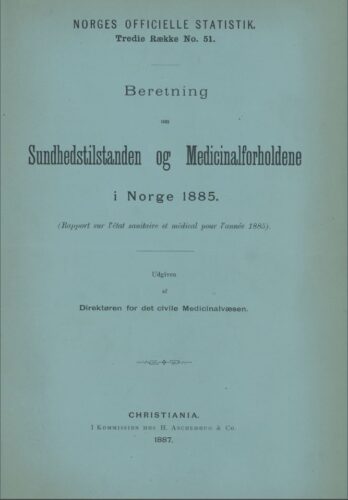Was the leprosy legislation humane, and if so, for whom?
The new legislation from 1885 sparked debate and was met with disapproval even by medical professionals. There was lively debate about the legislation in the Norwegian Medical Society, where the majority believed it was too strict. Several of them protested the law ‘in the name of humanity’, and the most critical opponents argued the law likened those affected by leprosy to convicts.
In the districts where leprosy was the most prevalent, there seems to have been a more positive and perhaps practical view on things. A total of 148 of the 176 health commissions in Norway welcomed the strict measures. Disagreements were likely due to their being different opinions on what caused the leprosy, and therefore the best way to combat the disease. Armauer Hansen had convinced many through his experience with isolation that it was a necessary method for combating the disease, but not everyone was convinced that leprosy was truly an infectious disease.
Hansen was also the architect behind the principles of the legislation. He pointed out that up until that point, most of those hospitalised were in poor general health had therefore not been difficult to persuade. Now, however, there would be a need to hospitalise a larger proportion of those with leprosy to ensure that the number of new cases rapidly declined. Those with fewer symptoms and ailments would likely be less willing to apply for a place in a hospital. He was therefore of the opinion that a new Act was needed that allowed for the potential use of force.
According to Hansen, it was no longer enough only to consider those with leprosy and their wishes, but consideration also had to be given to the healthy majority. As citizens, those with leprosy had rights, but also duties. They needed to be willing to protect their fellow citizens safeguard their human rights by limiting physical contact. They therefore had to be hospitalised if it was deemed necessary.




